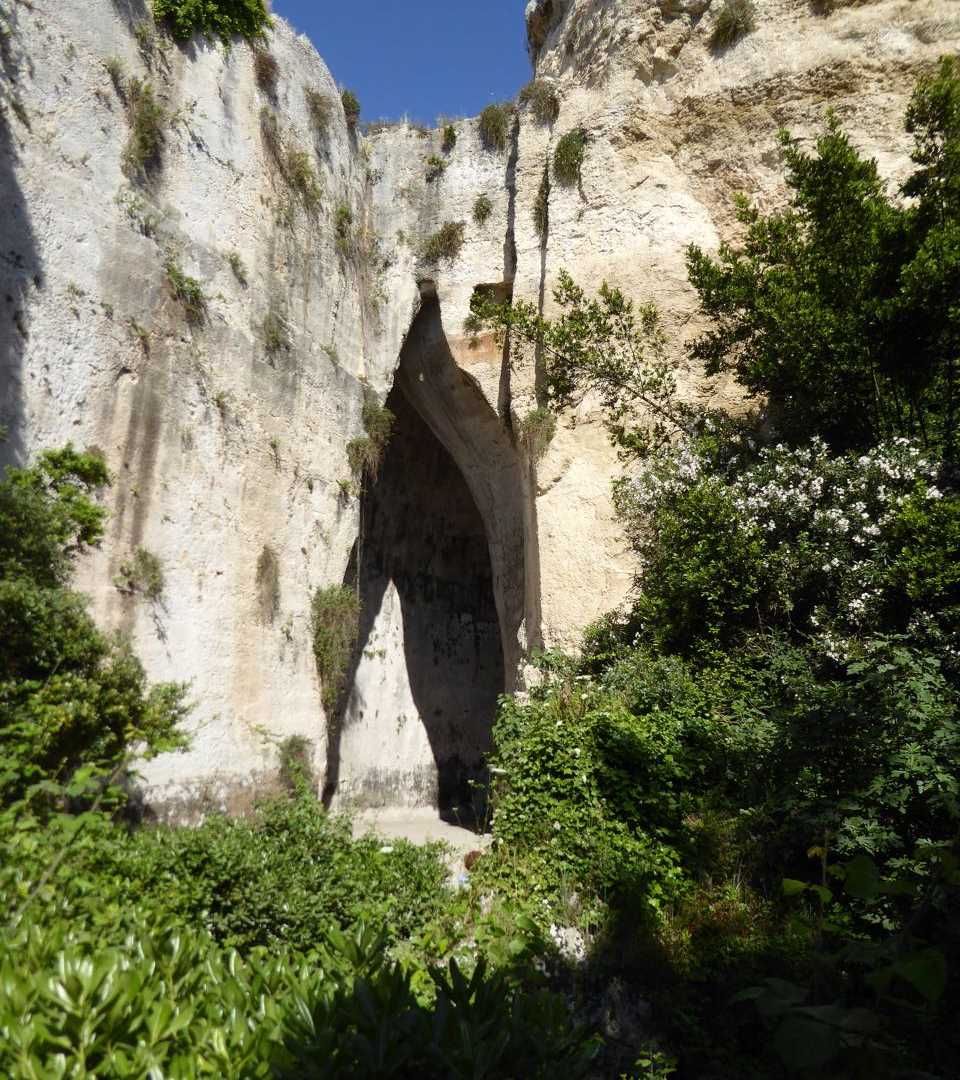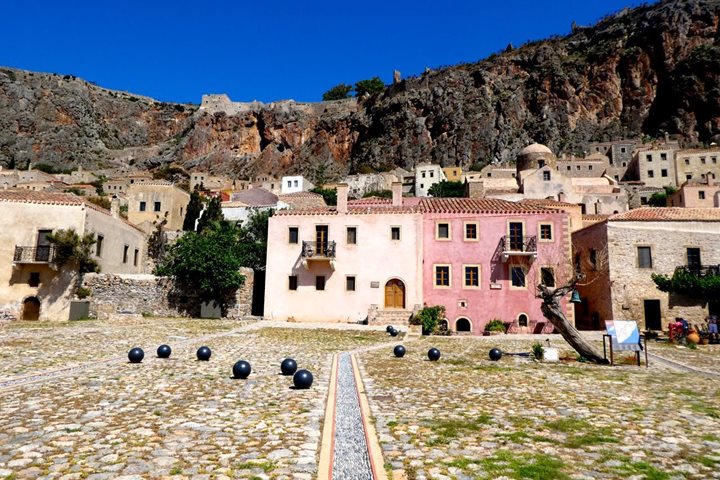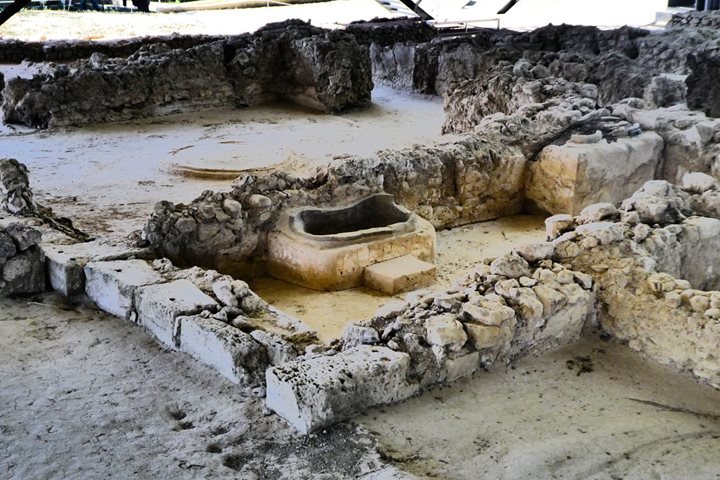By fifth century B.C. Sicily had become a formidable economic and political player in the Mediterranean world. One of the most powerful was the city of Syracuse, situated on the shores of a huge natural harbor on the southeast coast of the island.
Despite our late night at the Castello degli Schiavi, everyone was up early, cameras in hand, ready to explore. Our activity choices for today were either the archaeological park of the Neopolis, or the bustling stalls of the Saturday market in Ortygia, which is the oldest sector of the Greek town.
We were the first groups to arrive in the park and we headed straight to the Lautumia, which is a limestone quarry that date back to 480 B.C. It was here that the youth of Athens perished after their disastrous misadventure during the Peloponnesian War. Filled with a lush grove of citrus and fig trees, pink oleanders, bamboo, flowering acanthus and clumps of caper bushes in full bloom, it is hard to imagine the horrors that must have befallen those condemned by the Tyrants of the ancient city to cut stone blocks to build the adjacent theater and various temples scattered throughout the classical Greek city. We moved on to the Greek theater before finishing our tour at the flower-bedecked Roman amphitheater.
When we returned to the pier, the produce and fish market was still in full swing with people making their way down aisles full of delicious fruits and vegetables. The vendors in the fish market were trying to outshout each other, while those selling candied fruits were handing out free samples to tempt every shopper.
After lunch aboard the ship, we returned to the pier for a walking tour of Ortygia, a small island that was once the heart of the ancient city. Our tour began near the food market, overlooking the Temple of Apollo, before weaving our way through the narrow alleys that lead to the Piazza del Duomo. We took a tour of the Cathedral and then remained in the square, watching the evening light bathe the Duomo in a soft golden glow. The soaring saints atop the façade seemed to spring to life and the shadows deepened along the north side of the cathedral. They highlighted the 5th century B.C. Doric columns that make up this side of the Domo, reminding us that we are still in Ancient Greece city of Archimedes.







